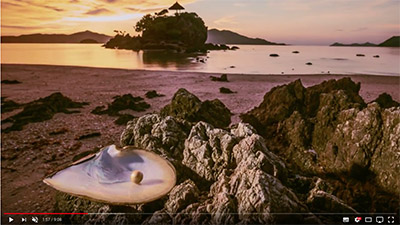South Sea Cultured Pearls
There are two types of the South Sea pearl oysters, both of the species Pinctada maxima; the silver-lipped and the gold-lipped. The silver-lipped pearl oyster creates pearls in the shades of cream coloured, white, silver white and rose white whereas the pearls from the gold-lipped pearl oyster have the shades of cream-coloured, yellow, and deep gold.
The South Sea pearl has several countries of origin. The white ones mainly come from Australia and Indonesia and the golden ones from either Indonesia, the Philippines or in rare occasions from Burma. The conditions on the South Sea pearl farms may vary considerably from farm to farm and we therefore make it a point of honour to strive towards only working with pearls which origin is known to us. Marc’Harit work with chosen pearl farms from Indonesia and the Filippines which follow sustainable principles though out the entire value chain. Read more about our sustainable initiatives here.
Besides the conventional factors like quality, size and shape, the value of the South Sea pearl is also dependant on the colour. Most valuable are the fine white, the rose white, the silver white and the deep gold coloured. Shapes can be baroque, semi-baroque or button shaped, beautiful drop shaped or perfectly round. The sizes are between 9-18mm, with unique pieces of 20mm and above. Rare pearls of 30-40mm have equally been seen. The Pinctada maxima is the largest pearl oyster in the world.
See some of our available South Sea Pearls in our Digital Catalogue.


